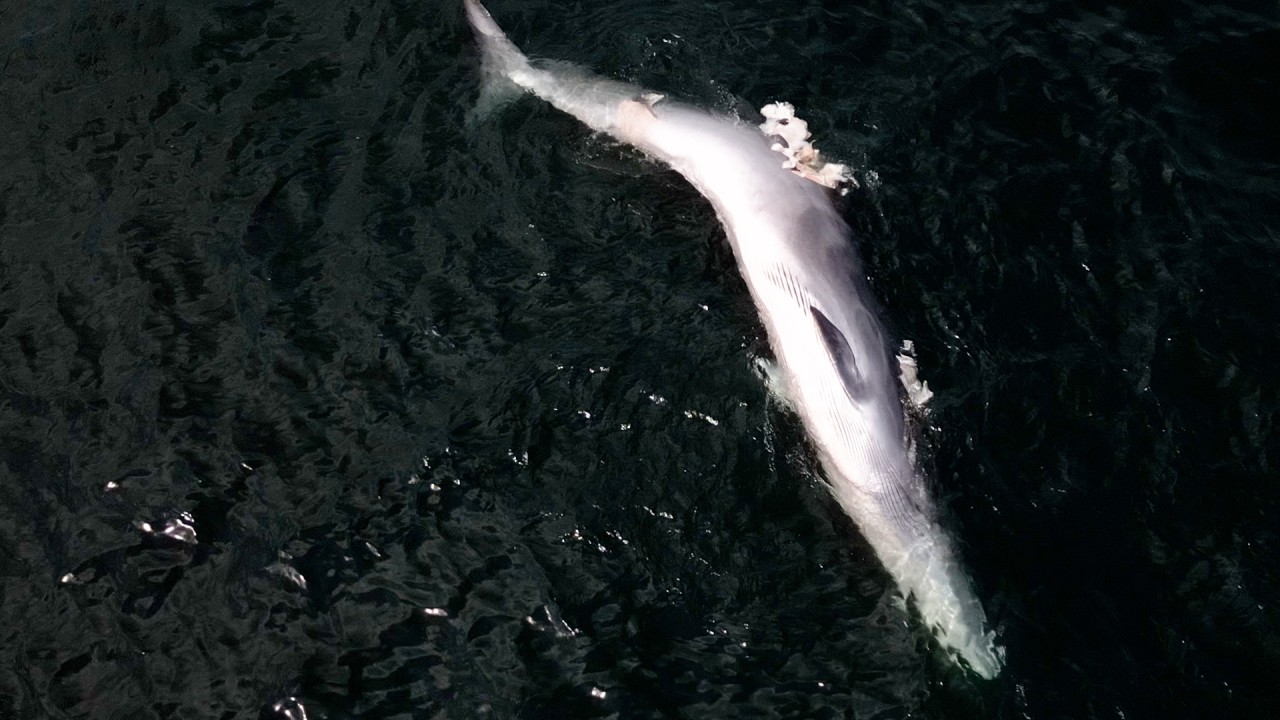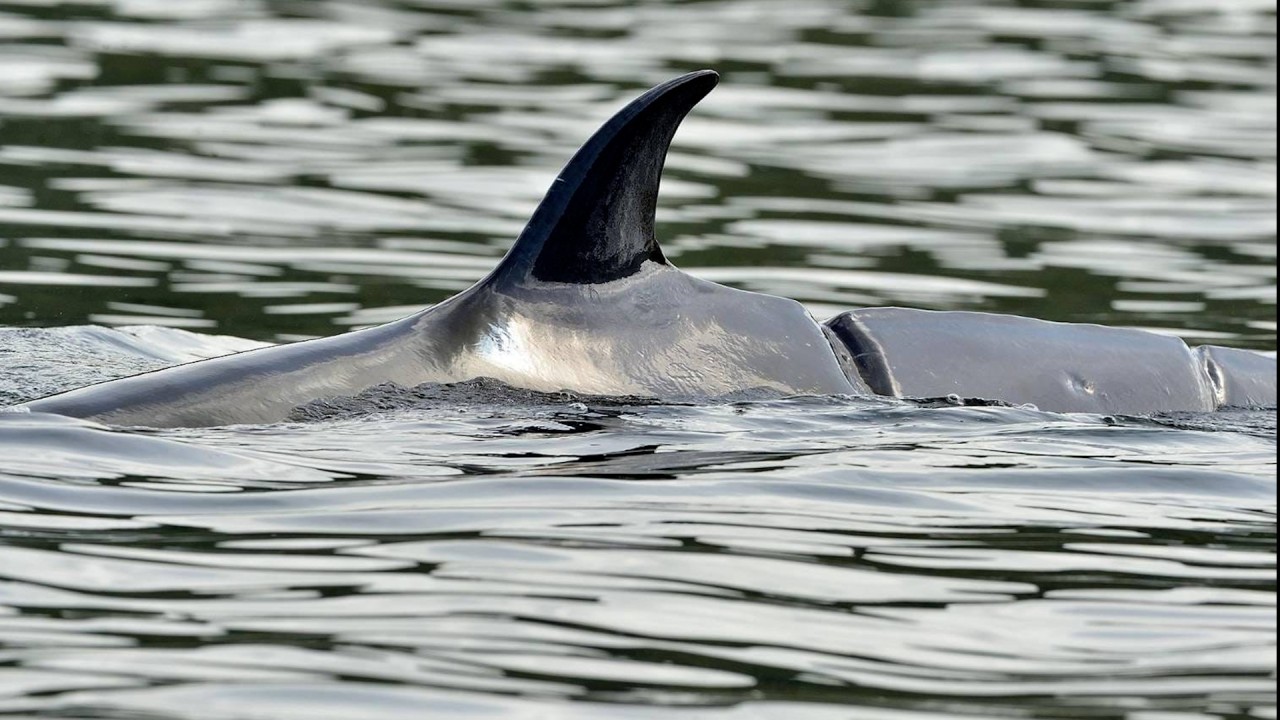
Should tourist boats be banned from nearing whales? Carcass discovery in Hong Kong prompts review of rules
- Environment chief Tse Chin-wan says conservation officers may be given more powers to protect wild animals in similar situations in future
- Review might also cover need to set up restricted area around whales to ban vessels from approaching, he adds
Hong Kong’s environmental authorities will review whether officials should be given greater power to protect wild animals after the discovery of a whale carcass believed to be the same mammal of a rare species spotted in the city’s waters two weeks ago.
Secretary for Environment and Ecology Tse Chin-wan on Tuesday said protocols for handling similar situations would be drafted, but denied authorities’ response to the whale’s appearance was “too slow” or “passive”.

“There seems to be limitations in the immediate power given by the laws to the Agriculture, Fisheries and Conservation Department to handle such incidents,” he said.
“Therefore, we will review relevant laws and see whether there is any room for improvements to give the department more power to handle similar situations more effectively and efficiently in the future.”
The review might also cover the need to set up a restricted area around whales to ban vessels from approaching, he added.

He also pledged to strengthen public education and arrange overseas training for the department’s officers.
A seven-metre (23-foot) Bryde’s whale was spotted in Sai Kung waters in mid-July, sparking huge interest among residents, with many heading out in boats to catch a glimpse of the animal.
The city’s No 2 official Eric Chan Kwok-ki last Wednesday asked police, the Marine Department and the conservation department to step up patrols to protect the mammal.
Whale carcass found in Hong Kong waters sparks anger against sightseers
The whale was reported dead on Monday. A fresh wound was found near its dorsal fin, and part of its internal organs and muscle tissue were protruding from its body. It was earlier seen with two old injuries on its back, which were believed to be caused by propellers.
The government commissioned the Ocean Park Conservation Foundation to perform a necropsy on the carcass at the High Island Reservoir’s west dam, to determine the cause of death. The procedure began on Tuesday and could take several days.
Tse said the conservation department began working with the foundation and had consulted mainland Chinese marine experts and local conservation groups since the sighting of the whale on the ideal way to handle the situation.

“But we found that there are a lot of difficulties, for example, if we use some methods to drive it out, the whale may be scared and be more prone to get hurt. If we move it away with some physical methods, it may be easily injured,” he said.
“That was why the experts, after considering all aspects, thought it might be a good idea to simply observe it and appeal to people not to engage in whale watching or disturb it.”
Tse admitted that the public might lack awareness of how to properly act towards wild animals but warned against jumping to conclusions about the cause of the whale’s death.
“I do not think that we should simply point the finger at the public’s poor awareness,” he said. “Whether the whale’s death is directly related to whale-watching activities or what some people described as the government’s slow response, we should look at the cause of death first. We should not reach a conclusion too hastily.”
He added that even if the whale was killed by boats, it would be difficult to collect evidence for prosecution.
Shenzhen authorities set up a temporary protection area, covering 64 sq km (25 square miles) in Dapeng Bay in August 2021 after a whale was spotted that June, according to Xinhua.
Propeller wounds on whale spark calls for Hong Kong public to stay away
But conservation department director Leung Siu-fai, said Hong Kong was unable to set up a similar protection zone.
“The area where the whale emerged was very large. If we have to set up a restricted area, it may be very difficult and affect many maritime users,” he said. “Therefore, we came up with a way where we conducted intensive patrols in collaboration with marine police and the Marine Department in the area where it appeared.”
Leung said the authorities might adjust the Code of Conduct for Dolphin Watching Activities so it could be applied to other wild marine life. He added that they were considering turning the carcass into a specimen and using its bones for scientific research and public education purposes.
The director of the conservation foundation, Howard Chuk Hau-Chung, said the initial investigation revealed the whale was a juvenile.
Chuk, who is also head of Ocean Park’s Zoological Operations & Conservation, said they would send samples for testing in Hong Kong and overseas to see whether it had any underlying diseases that might have contributed to its death.
No foreign objects or debris were found in its stomach, he added.
Thomas Jefferson, a marine mammal biologist at the Washington-based regulatory agency National Oceanic and Atmospheric Administration (NOAA), agreed that regulations might be needed to avoid similar incidents.
“Unless working under a special scientific permit for research, all vessels and other watercraft should stay at least 100 metres from the whale to avoid disturbance and injury,” he said.
Jefferson, who has published research on Bryde’s whales, said it was a tropical species that spent its entire life in warm waters within about 40 degrees of the equator. Hong Kong sits about 22 degrees north of the equator.
He added that it might be the only species of baleen whale that appeared with any regularity in the area.
Such whales have baleen plates which sieve prey, such as krill, from the water, while toothed whales feed on fish, squid and other marine mammals such as seals and sea lions, according to the NOAA.
Whale carcass found in Hong Kong waters sparks anger against sightseers
“We were disappointed that the suggestion of a vessel ban and speed-limit proposal from us and other organisations was rejected by the government very quickly,” marine biologist Taison Chang Kai-tai, chairman of the Hong Kong Dolphin Conservation Society, told a radio programme on Tuesday.
Chang said Hong Kong should have set up a temporary protection area for the whale, similar to what Shenzhen authorities did after a Bryde’s whale was seen there in 2021.
It was reported that yachts, recreational and tourism vessels, motorboats and sailboards could not enter the area, and fishing was also banned. Vessels were also required to operate at a low speed and take precautions.
Chang said though the whale in Shenzhen was found dead in August 2021, if Hong Kong had adopted this measure the one first seen last month might have been able to leave local waters earlier.
He also expressed concerns that the government’s dolphin observation guidelines, which have been in place for years, were not enough to deter vessels from approaching the animals.
“Regrettably, these guidelines are not legally binding, which means that boat owners will not be prosecuted for violating them,” he said, urging authorities to consider enacting legislation.




